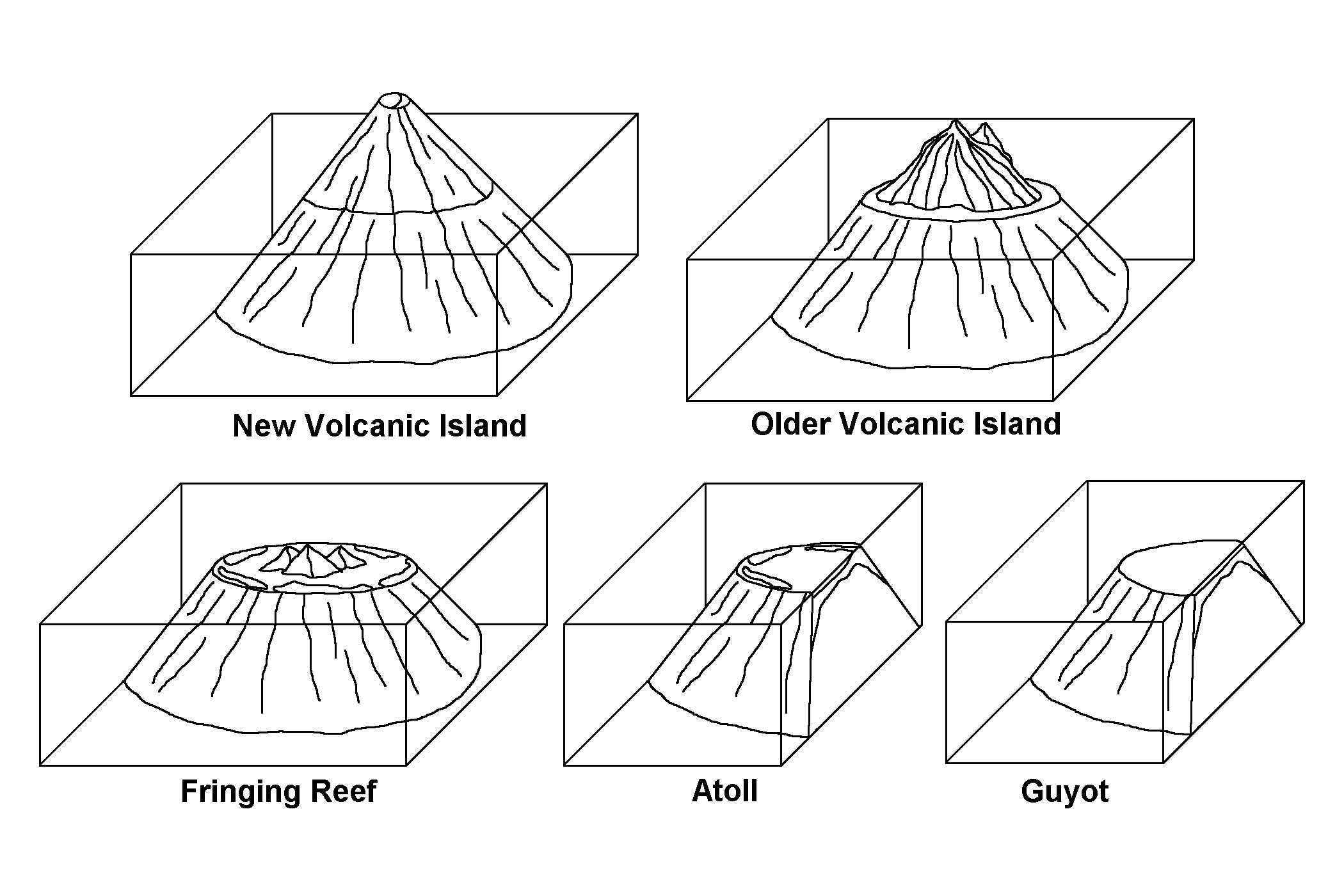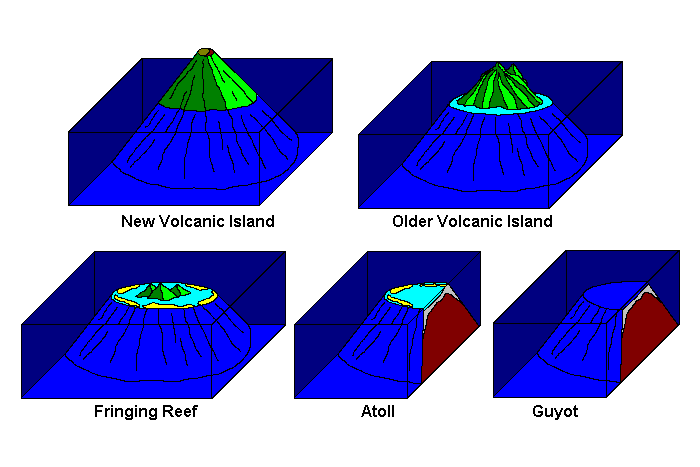Reefs
Steven Dutch, Professor Emeritus, Natural and Applied Sciences, University of Wisconsin - Green Bay
Reefs are features of tropical coasts around the world. They require two things: warm water, and light to sustain the microorganisms that the coral polyps feed on.
It was Charles Darwin, during his famous voyage on the Beagle, that first figured out how reefs evolve. A new volcanic island will begin to accumulate reefs. As the volcano erodes away, the shoreline retreats. Eventually, a small volcanic core might remain standing, surrounded by a fringing reef marking the original shape of the island. Finally, when the volcano is completely gone, all that remains is an atoll, a ring of coral islands on a planed-off volcanic remnant.
Another process that Darwin never knew about also plays a role: plate tectonics. As ocean crust ages, it cools and sinks, taking about 80 million years to sink to its final depth of about 5500 meters below sea level. Sinking of the ocean crust also plays a role in the disappearance of the original volcanic island. The coral continues to build the reef upward as the ocean floor sinks. Sinking is the slowest process, at about 30 meters (100 feet) per million years. It only takes a few million years to erode away the volcanic island, during which time it would only have sunk a few hundred feet. Coral can easily keep pace with that rate of sinking.
One thing the coral cannot cope with is cold water. If plate motions carry the reefs into cold waters, the reefs die. The island continues to sink, creating the final stage which Darwin never saw because it is under water. The last stage in the evolution of reefs is a guyot, a flat topped volcano with a dead coral cap, completely submerged.

Possible Coloring

Return to Geology Coloring Book Index
Return to Professor Dutch's Home Page
Created 19 July 2009, Last Update 15 January 2020